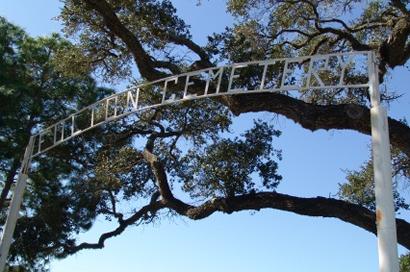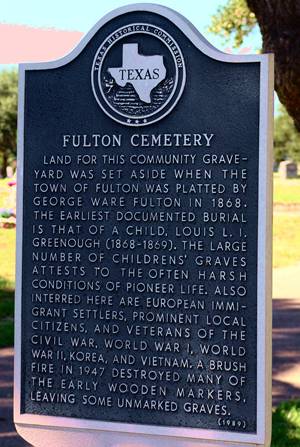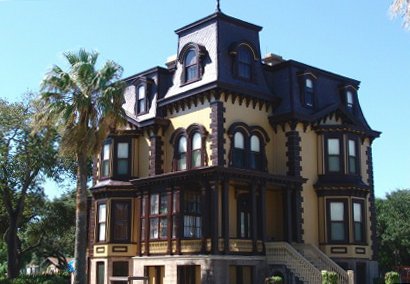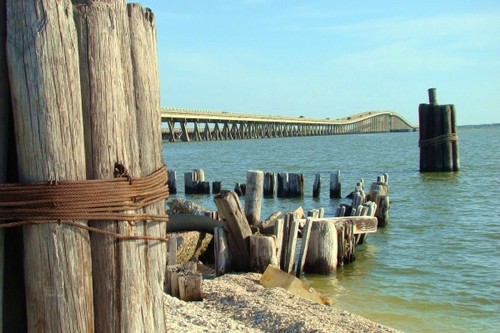Fulton, Texas Gulf Coast. (original) (raw)

History in a Seashell
Founded in 1866, the town was named after George Ware Fulton, the builder of the Fulton Mansion - one of the more famous 19th Century mansions in the state.
The port was busy during the cattle boom, shipping beef to Eastern ports and New Orleans. With railroad expansion, the packing houses closed down by the mid-1870s.
Fulton's population was a mere 175 in 1885. A stage line connected Fulton to Rockport
and St. Mary's of Aransas.
From 1888 to 1900 the town was renamed Aransas City. The name reverted back to Fulton with the closure of the Aransas City post office.
In the 1930s pre-Columbian artifacts were discovered. Tourism is the areas biggest economic asset.

Fulton Cemetery
Intersection of Myrtle St, 4th and 5th streets,
Fulton
Photo courtesy Ken Rudine, May 2007
Historical Marker:
Fulton Cemetery
Land for this community graveyard was set aside when the town of Fulton was platted by George Ware Fulton in 1868. The earliest documented burial is that of a child, Louis L. I. Greenough (1868-1869). The large number of children's graves attests to the often harsh conditions of pioneer life. Also interred here are European immigrant settlers, prominent local citizens, and veterans of the Civil War, World War I, World War II, Korea, and Vietnam. A brush fire in 1947 destroyed many of the early wooden markers, leaving some unmarked graves.
(1989)

Fulton Cemetery Historical Marker
5th and Myrtle Streets
3 blocks E of Hwy 35
Photo courtesy Ken Rudine, May 2007


Texas Escapes, in its purpose to preserve historic, endangered and vanishing Texas, asks that anyone wishing to share their local history, stories, landmarks and recent or vintage photos, please contact us.

